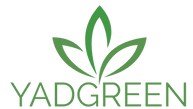Ta- SWAM
Tarout Bay Sustainable Wetlands and Mangrove Conservation (Ta-SWAM)
Please fill out the form to get in touch with the project developers.
Impacts
Project Information
The Ta-SWAM Project, located in Saudi Arabia, focuses on the preservation of degraded mangroves, contributing to climate change mitigation as a blue carbon ecosystem. Over 30 years, it aims to remove 32,095 tCO₂e from the atmosphere. Through debris management and resilience reinforcement, the project enhances ecosystem stability. It aligns with SDGs 13, 14, and 15, follows ISO 14064-2, and operates under Sectoral Scope 14 of the International Carbon Registry, ensuring sustainability standards.
Media
Sustainable Developement Goals

Climate Action
Take urgent action to combat climate change and its impacts

Life Below Water
Conserve and sustainably use the oceans, seas and marine resources for sustainable development

Life on Land
Protect, restore and promote sustainable use of terrestrial ecosystems, sustainably manage forests, combat desertification, and halt and reverse land degradation and halt biodiversity loss
Additionality
Level 1 additionality
Baseline additionality. Compared to the baseline scenario the project needs to mitigate climate change. That is the project must implement actions that are additional to what would occur compared to the baseline.
Level 2b additionality
Non-enforcement additionality. Projects are non-enforcement additional if their implementation and/or operation is mandated by local legislation or regulation but are systematically not enforced by authorities in the host country.
Level 3 additionality
Technology, institutional, common practice additionality. The project must implement actions that are subject to barriers of implementation or accelerate deployment of technology or activities and carbon market incentives are essential in overcoming these barriers.
Level 4b additionality
Financial additionality II. The project is financially additional if it faces significant financial limitations that revenues from the sale of carbon credits mitigates or are revenues due to the sale of carbon credits are the only source of revenues. When carbon credit revenues are a precondition for the implementation of the project and/or carbon credit revenues are essential in maintaining the project operations and ongoing financial viability post-implementation, then they are considered to be financial additional II.
Level 5 additionality
Policy additionality. Implementation of actions may lie out of the scope of the host country's Nationally Determined Contributions under the Paris Agreement and, therefore, not eligible for international transfer mechanism. When project implementation goes beyond its host country’s climate objectives and lies outside of the scope of its climate action strategy towards its NDCs, it is considered to be policy additional.
Participants
Organizations involved in the project
Version | File size | ||||
|---|---|---|---|---|---|
Other note 3 documents | |||||
Project description 1 documents | |||||
Review report 1 documents | |||||
Validation report 1 documents |
